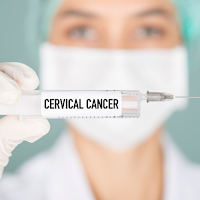Why is it that people with blood cancer are often less informed than those with other types of cancer? This is why we are addressing the question and highlighting what we can do for blood cancer to be more prominently recognized as a serious health condition. This information is provided by the Top Oncologist Blood Doctor in Delhi, that is Dr. Dodul Mondal.
We announced as part of our strategy that we would raise awareness of blood cancer as a serious health condition. Why? Because blood cancer awareness is lower than that of other types of cancer (breast, lung, prostate, etc.). Our new strategy recognizes that there is a lack of awareness about blood cancer and it needs to be addressed.
We asked the community for their opinions and then a group of people, including Blood Cancer staff members and people living with blood cancer, used this feedback to start working out this issue.
It was obvious already that we need to make blood cancer a major part of all communications in the coming years. You'll notice that our communications, especially those aimed at people we don't already know, are more focused on this. This is evident in our recent awareness video featuring sporting celebrities.
Raising awareness about blood cancer involves more than the communication we send out. It is not a common cancer. There are many other obstacles, such as the way that healthcare professionals and charities talk about it, and the way that the Government and NHS report on cancer data.
We don't have enough resources to tackle all of them. As a group we examined all options and analyzed data to determine how feasible it was to effect change. We chose three priorities to focus on that we believe will be the most effective for our success. These are:
1) Ensuring that people understand their diagnosis is key to preventing blood cancer.
Diagnosis is an important step in a person's journey with blood cancer. Yet, only 25% of patients are diagnosed with a specific type of cancer.
People with blood cancer are less likely than people with other types of cancer to feel they have a complete understanding of what is happening. Hearing "a type" of blood cancer - a term that describes what is wrong with the body - can help people better understand their diagnosis than terms such as "Leukemia", Lymphoma, and "Myeloma".
Given the fact that blood cancer is diagnosed in 40,000 people each year, it could be an opportunity to raise awareness.
2) Make sure that information regarding blood cancer is included in health information
Many charities and NHS organizations provide excellent information about various types of blood-cancer, and they are available online as well as in print.
However, while a lot of health information uses the term "blood cancer", others don't.
This is a chance to convince these organizations that if they have any information about a particular type of blood cancer, they should mention it.
3) Enabling the blood cancer community with the ability to spread the word
Our history over the past decades has demonstrated that the blood cancer community can make a difference in the lives of people with blood cancer. It's been proven time and again that together we can accomplish extraordinary things. Therefore, it makes sense that our community should be a major part of raising awareness about blood cancer.
This means that we will not just communicate about it by advertising, getting articles in the newspapers, and posting messages on social media, but we will also give the tools necessary to spread the message to the blood cancer community.
What's the next step?
While there is much we don't know, we do know two things about initiative.
People affected by blood cancer will shape our work. People affected by blood cancer have been included in the group that set the direction of this work. We need to keep this up.
Awareness of blood cancer is a complex and large problem. Our approach to dealing with it will not be perfect right away. It's important to recognize that it is.
This strategy will see us working together over five years to increase awareness of blood cancer. We also want to increase awareness of individual conditions like lymphoma or myeloma.
This is a difficult task, we know. We know that blood cancer is not a common form of cancer, but it's an issue that many people have to live with. So if you have any problem regarding Blood Cancer you can surely contact the Best Cancer Blood Specialist in South Delhi.







.png)


.png)